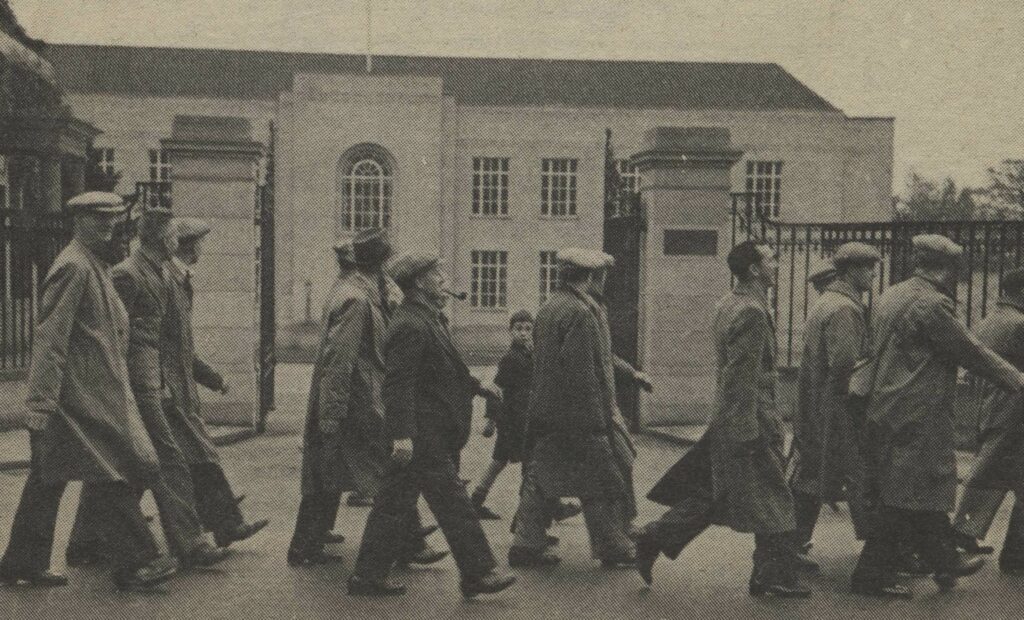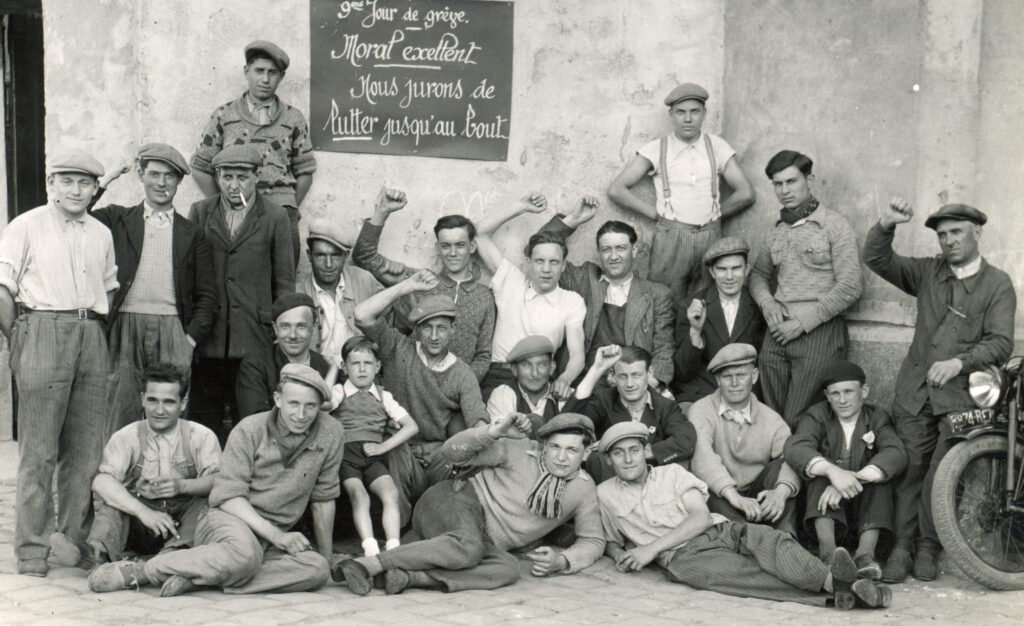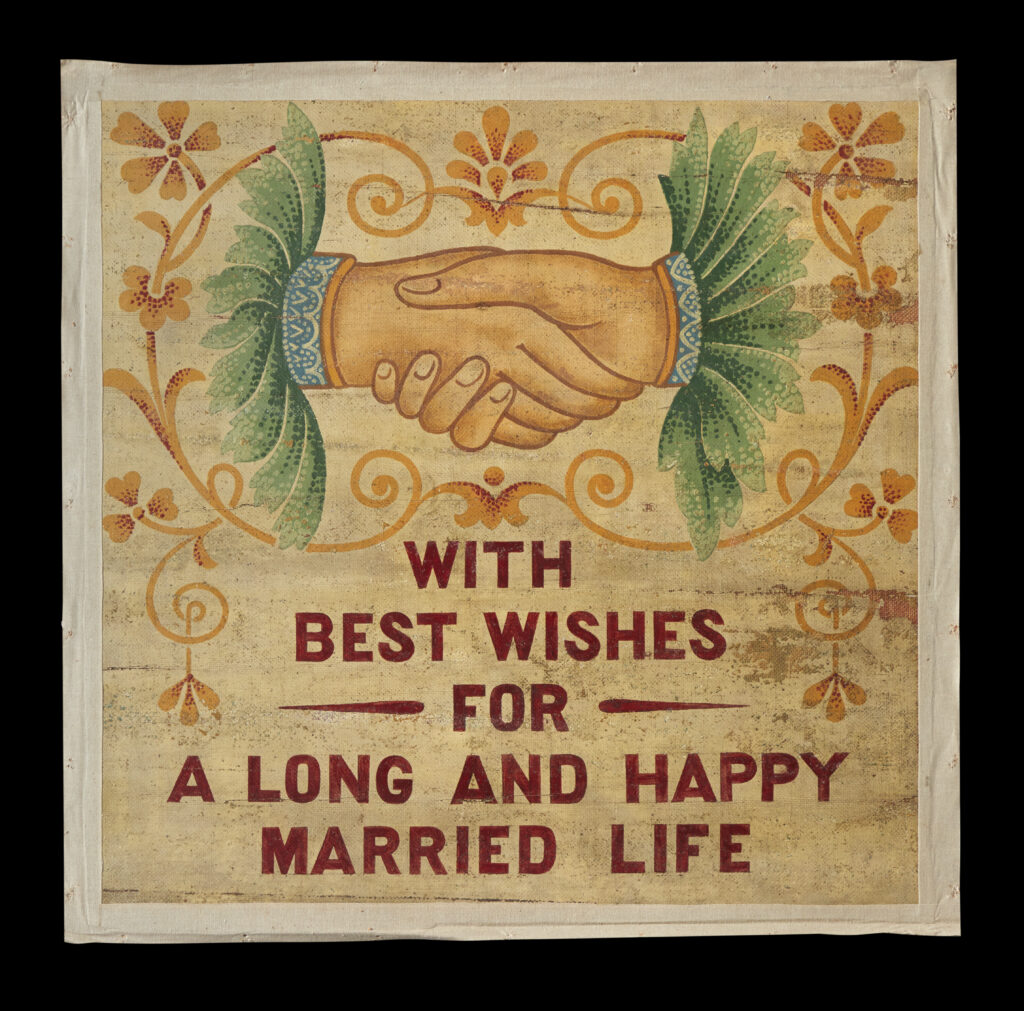As we reach the end of the first year of the Flooring the World project, curator Lily shares some of the things the project has achieved over the last twelve months.
February

Image: Block made up of layers of ink. FIFER:2022.0184
One of the first things I did when I joined OnFife was visit the archive at the Forbo Factory on Den Road. The firm, initially as Michael Nairn’s and then to Forbo through a series of name-changes and mergers, has been producing floorcoverings in Kirkcaldy since 1847. They have offered their entire archive to us as part of the project, and I’ve spent a lot of time this year working through their amazing objects, documents and photographs deciding what to bring into our collections.
I accessioned this strange object after my first visit. It’s a block made up of layers of ink used to print designs on linoleum. It was cut from a spot under the floorboards in one of the – now demolished – Nairn’s printing lofts – over the decades, waste ink had dripped between the boards and built-up layer by layer. This block is a literal slice of history.

Image: RMS Queen Elizabeth, made out of linoleum. FIFER:2022.0147
Another new addition to the collections was this brilliant picture made of out linoleum. It shows the ship the Queen Elizabeth at sea, and was probably made in the late 1930s. We don’t know who made it, but suspect it was probably created in Fife. Read our post on this curious object to find out more.
I also got the change to visit Newburgh, another key site in the story of the Fife linoleum industry. While the factory buildings which made up the Tayside Floorcloth Company complex are now gone, the imprint of the industrial is still visible in the town. One place you can find a trace of it is in the Laing Museum – the patterned floor of the museum is original printed floorcloth which was laid in the 1890s.

Image: Floorcloth at Laing Museum, Newburgh
March

Image: Page from a pattern book. FIFER:2022.0150
In March, using funds provided by the Friends of Kirkcaldy Galleries, we had some of the objects in our collection photographed. Some of these – like the pattern book above – were new arrivals from the Forbo archive. Others, like the medal below, had been in our collection for some time. Medals like these were awarded to manufacturers at World’s Fairs and Expositions during the late 19th and early 20th centuries. Perhaps the most famous of these was the Great Exhibition in London, 1851 – sometimes known as the ‘Crystal Palace’. Nairn’s were unlucky at this fair, but took notes on the products displayed by other floorcovering manufacturers to improve their processes. The research paid off, and for years afterwards they regularly returned home from these trips with a brace of accolades.

Image: Linoleum medal, brass, Allgemeine Deutsche Patent und Mustedrschutz Ausstellung in Frankfurt A. M. 1881, M Nairn & Co. TEMP:2011.1529
April
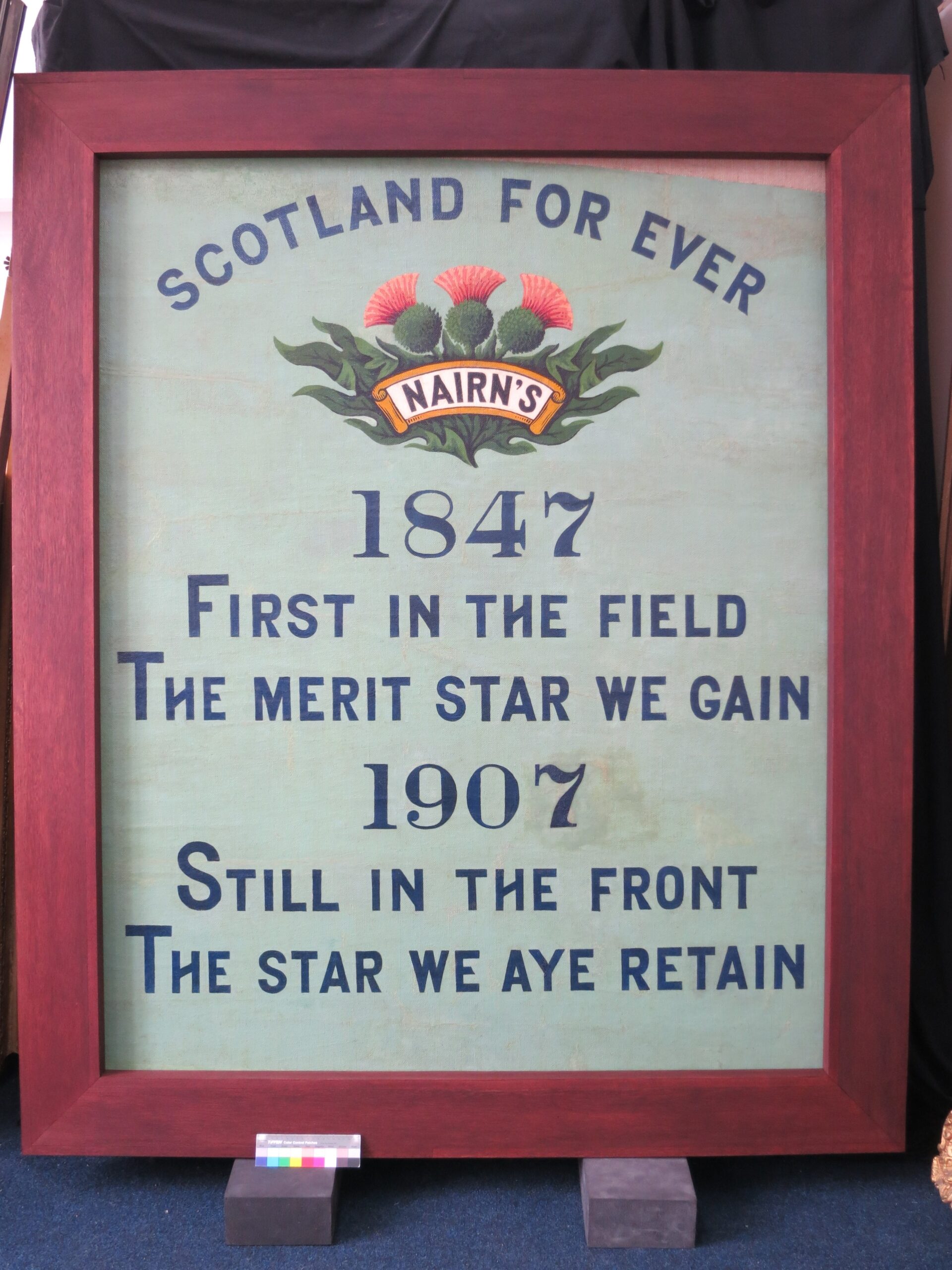
Image: Floorcloth banner. KIRMG:1983.0078
April saw the long-awaited return of one of our gorgeous floorcloth banners to Kirkcaldy Galleries. This banner went out for conservation before the start of lockdown in 2020 but, in order to keep everyone safe, it wasn’t possibly to reinstall it until 2022. The banner is one of five known to exist – all of which are in our collections. It was created by workers at Nairn’s at some point between 1900 – 1905, with a design painted on the plain underside of a printed floorcovering. Its conservation was generously funded by the Friends of Kirkcaldy Galleries.
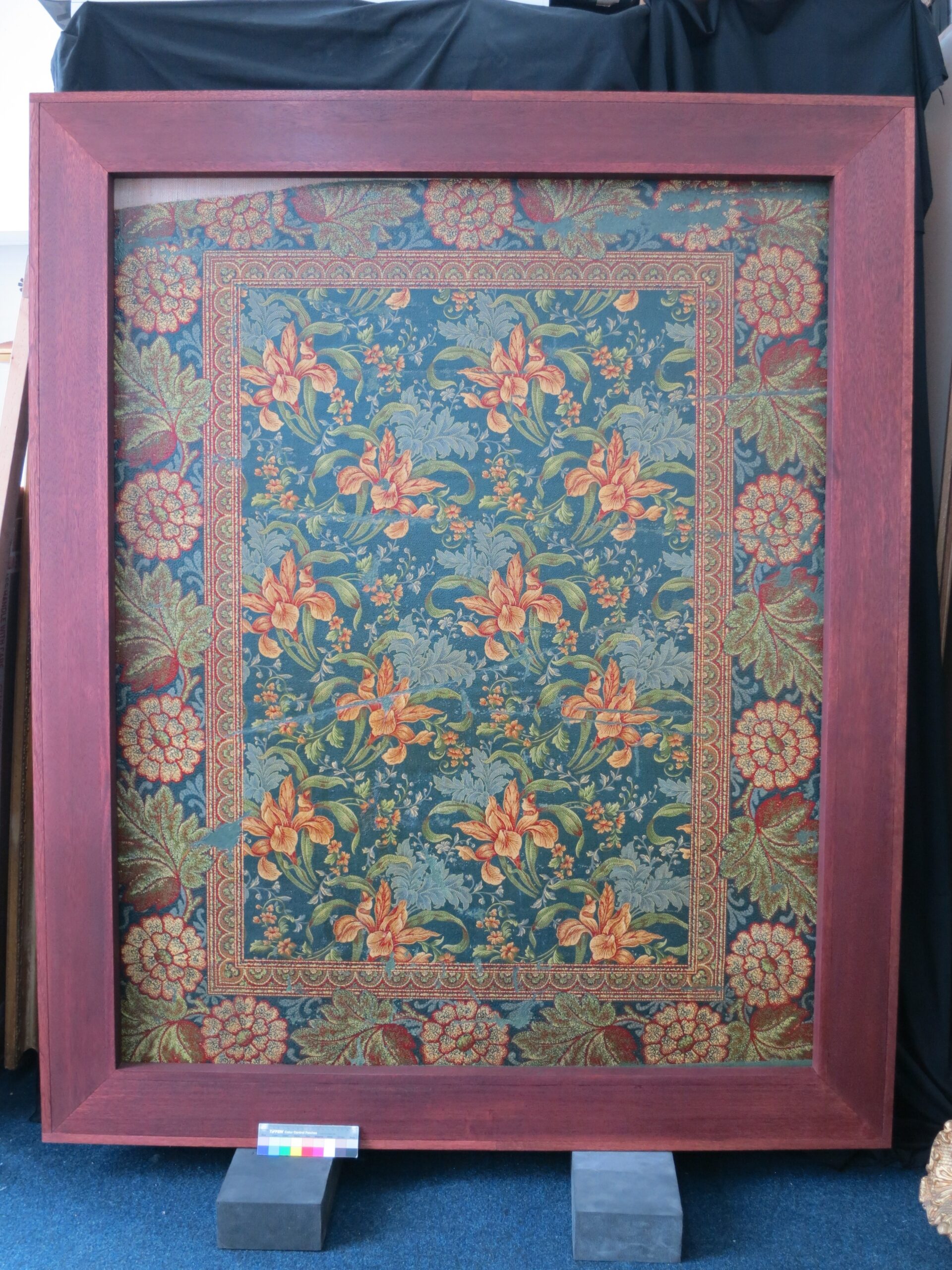
Image: Back of the floorcloth banner. KIRMG:1983.0078
I also changed over the display in our Moments In Time case in Kirkcaldy galleries. At the beginning of the project I set myself the (perhaps overly ambitious goal) of changing the objects in this case once every three months. I began with a selection of objects from the Forbo archive, including the paint block I mentioned above.
May
In May I had the opportunity to share the project with other people working in museums across Scotland. I gave a presentation at the Scottish Museum Federation’s annual conference, introducing them to the wonderful world of linoleum and sharing the work that had been done so far. I also got the chance to show National Trust for Scotland curators Antonia Laurence-Allen and Emma Inglis (curators for Edinburgh and East, and Glasgow, respectively) around our stores. We spoke about the fascinating history of linoleum in Scottish houses, and talked about places where it can still be seen in situ today.
June

Image: Linoleum lent to V&A Dundee. FIFER:2022.0167
In June we had a visit from staff from V and A Dundee, who selected some samples of linoleum to go in their exhibition Plastics: Remaking Our World. Linoleum is not a synthetic plastic, but a biodegradable substance made of natural materials derived from plants. The objects were included to help illustrate some of the first materials which were designed to solve the same problems which were later resolved by plastic – perhaps by revisiting these older materials we can find an answer to the problems plastic in its turn has caused. These samples will be coming back to us soon, but you can still see some gorgeous inlaid lino in their Scottish Design gallery.

Image: Linoleum sample on long-term loan to V&A Dundee. FIFER:2017.0016
I also got a chance to write up some research I’d been doing, inspired by the many beautiful linoleum designs in our collections which were clearly intended for children’s rooms. Most of the patterns in our collections – be they in books or samples – are fairly neutral, and would be suited to any space. The exception is a small group of very intricate, complicated designs featuring characters from nursery rhymes. I wanted to find out more, and if you do to, then you can click here to read all about it.

Image: In a pattern book produced by the Kirkcaldy Linoleum Company, 1876 – c.1900. FIFER:2022.0150
July
Shh! In July I was invited along to talk about linoleum for a forthcoming TV programme. I can’t tell you too much about it yet, but watch this space!
By July, it was already time to change the Moments In Time case. This time I opted to go for a selection of objects and photographs which told the story of Kirkcaldy linoleum in the 1960s – a dark decade which saw the loss of much of the city’s industry. I wanted to try something a little bit different, so supported this display with a playlist of songs which were popular at the time, to help conjure up memories of times gone by. You can listen along here.

Image: 1960s linoleum.
August
In August I was lucky enough to record the first oral history of the project. This involves going out to meet people who worked – or who had relatives who worked – in the linoleum industry, and speaking to them about their working life. These recordings become a part of our collection, and can be accessed by anyone interested in the industry to help them to learn more about the lived experience of those would made the linoleum industry possible.
For my first oral history recording, I spoke with someone who designed patterns from linoleum at Newburgh, first for the Tayside Floorcloth Company, and then for Barry Staines. They also kindly donated some of their hand-painted designs, which were created between 1959 and 1969.
I am hoping to record even more oral histories in 2023. I’d like to speak with anyone and everyone who worked (or who had family members who worked) with linoleum, or anyone who has a story to tell me about the industry in Fife. I’d be particularly keen to hear from those who have memories of the industry in Falkland, as this is somewhat underrepresented in our collections.
If you’d like to learn more, please get in touch using the contact details at the bottom of this post.
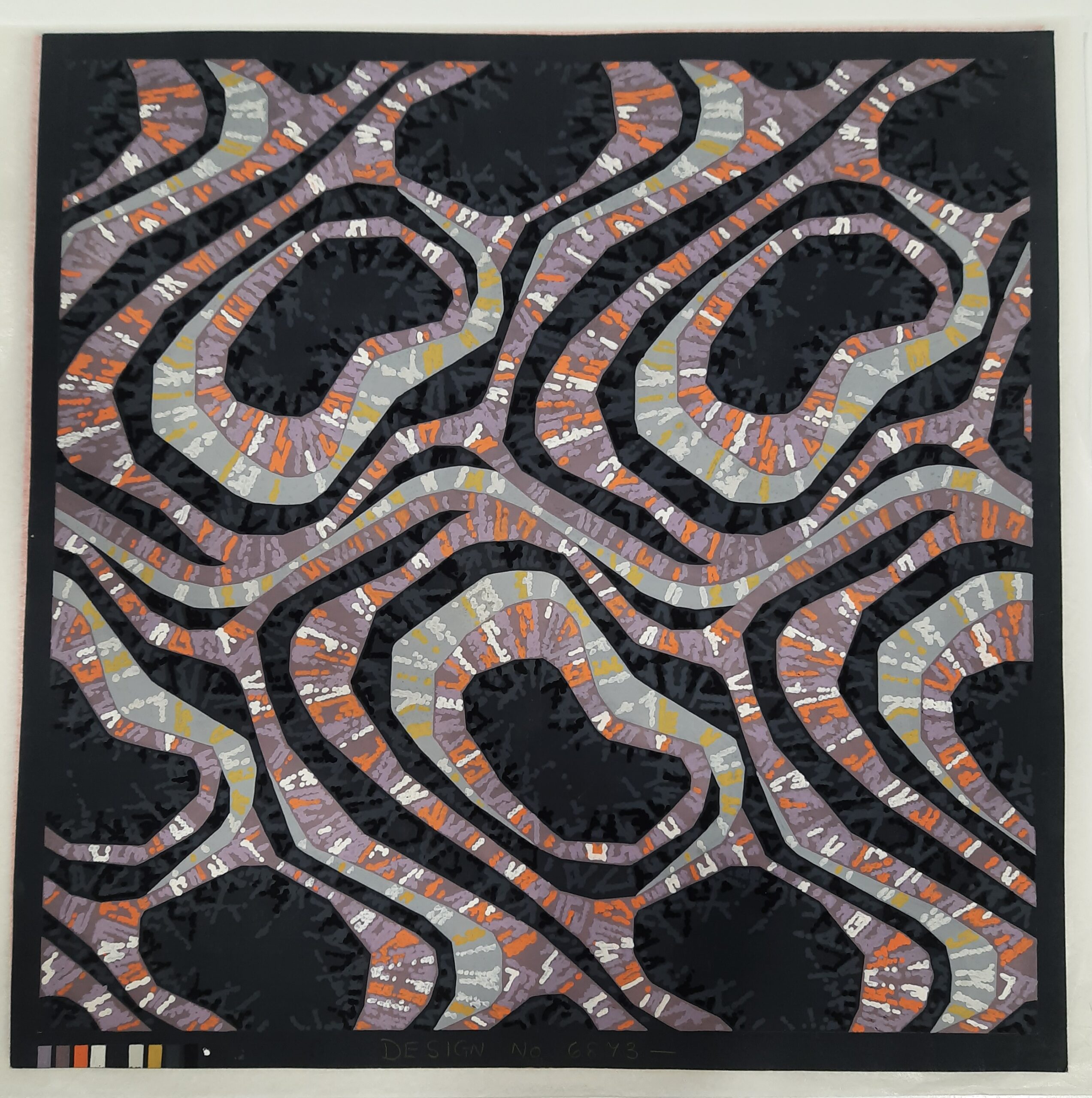
September
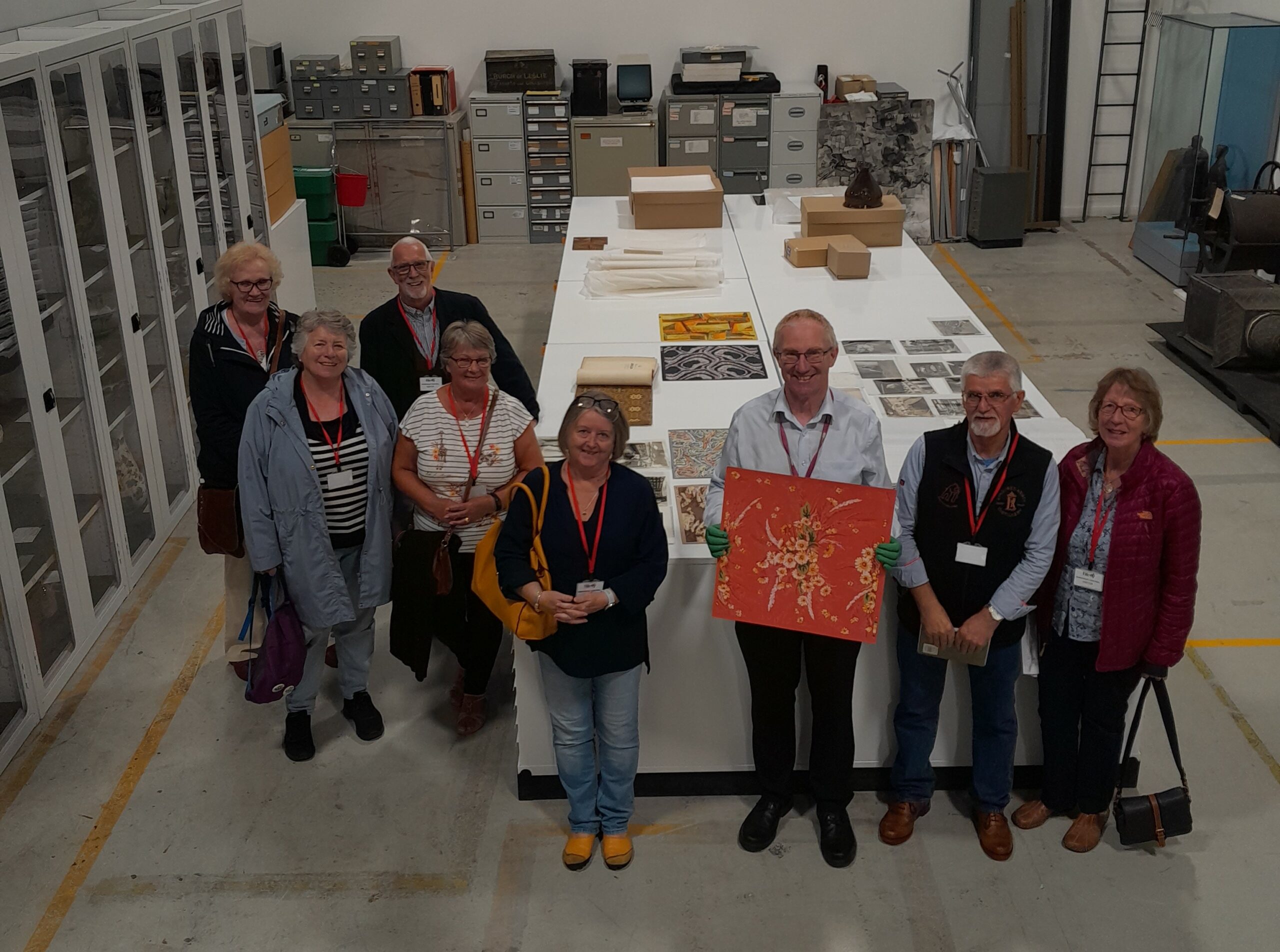
Image: Newburgh Ancestry and Family History Society visit.
In September, we welcome the Newburgh Ancestry and Family History Society to our collections stores at Bankhead. The group were there to see a selection of objects relating to Newburgh, including some of the wonderful photographs in our collection showing the town’s linoleum industry.
October
Patented!
I was invited to speak about the history of lino on Patented, a podcast produced by History Hit. She chatted with host Dallas Campbell about how linoleum was invented, and how – via a ground-breaking legal trial – it made its way to Kirkcaldy.
We also welcomed the first of our linoleum store tours! This meant welcoming two groups to take a guided tour around our collections store at Bankhead, before giving them the chance to get up close and personal with a selection of objects, documents and photographs from our linoleum collection. This included a chance to see the newly conserved Paolozzi elephant (more about them in December!).
Finally, I changed over the Moments in Time case in Kirkcaldy Galleries to feature a display about the in-house fire brigades employed by linoleum factories. You can learn more about them in this blog post.
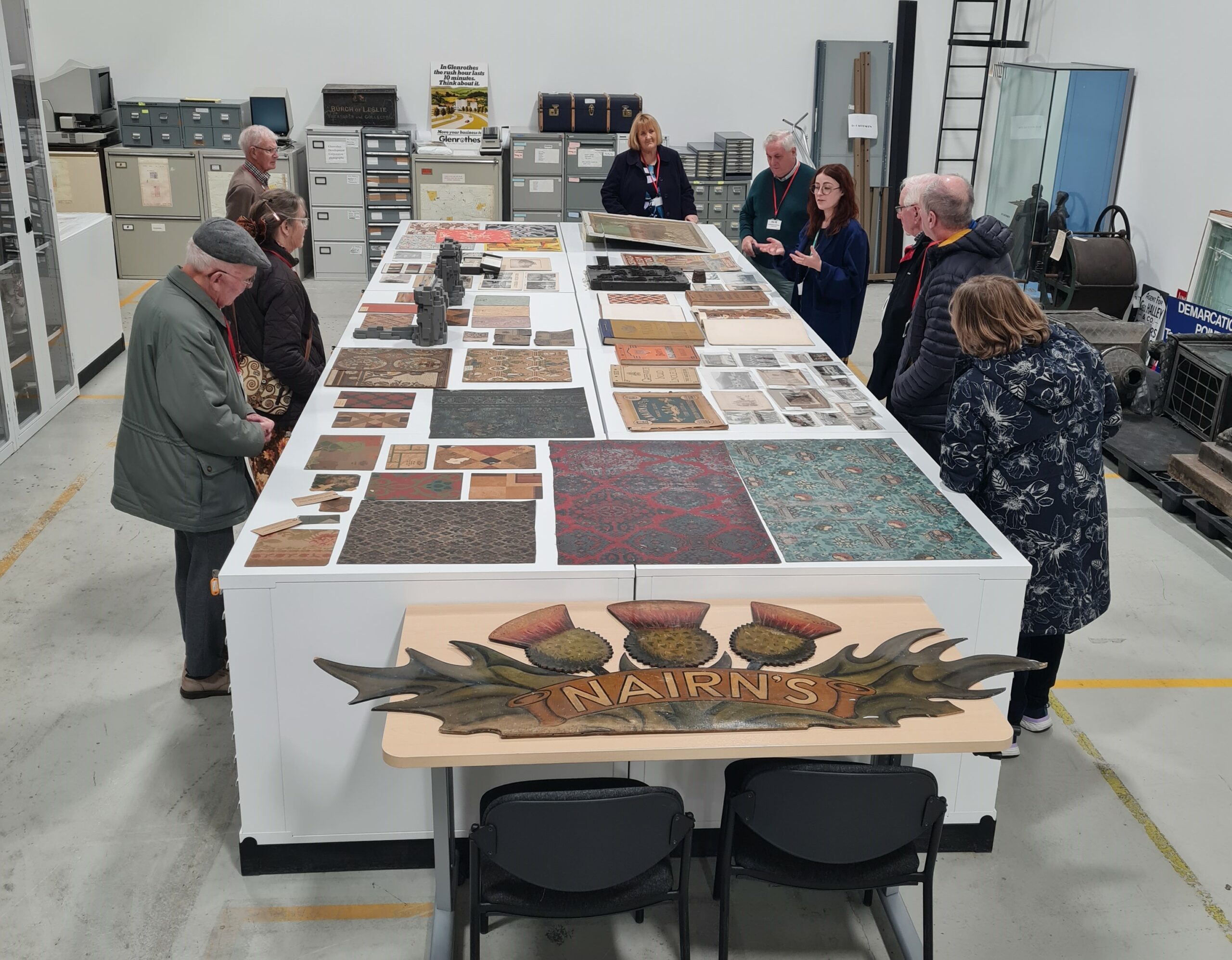
Image: Collections store tour.
November
November saw another round of tours, with yet more visitors getting to see our collections in the flesh. We’re looking forward to running more of these in 2023, so if you’re interested in coming along please get in touch using the contact details at the bottom of this article.
I also collected another load of boxes from the Forbo Archive – these were the last to enter our collection this year. In total, we accessioned over a nine hundred objects, documents and photographs from the Forbo Archive in 2022 – and there is lots more to come in 2023!
One of my favourite things from the archive is this photograph of two men holding a floorcloth banner, probably dating to c.1900-1909. The banner is now lost, so this photograph is our only record of it.

Images: Photograph of workers with a floorcloth banner. TEMP:2012.4439
December

Image: Paolozzi elephant. FIFER:2022.0235
Remember those elephants I mentioned earlier? Well, following conservation they both went on display in Kirkcaldy Galleries, where you can see them until the beginning of March 2023. If you’d like to learn more about these peculiar pachyderms, check out our previous blog post here.
We also welcomed a piece of William Morris patterned linoleum into our collections. The sample was a gift from the William Morris Society Hammersmith, and is a piece of the only linoleum ever created from the Morris Company. It is believed to have been manufactured in Kirkcaldy in the 1870s. We haven’t had a chance to have this photographed yet, but are looking to have it on display in Kirkcaldy Galleries later in 2023.
January

In January I installed a new display in the Moments in Time gallery, this time featuring buildings associated with the linoleum industry which were demolished during the 20th century. I’ll be changing this display again in April – so watch this space!
What’s next?
2023 is going to be a very exciting year for the Flooring The World project. We’ll be working with communities in Newburgh and Falkland, as well as volunteers in Kirkcaldy, on some exciting projects which we’ll share later in the year. Plus we’ll be working on our exhibition, which will open at Kirkcaldy Galleries in November.
We’ll also be continuing to improve our collections, and to collect oral histories from those with first or second hand experience of the linoleum industry. If you have memories you’d like to share, please get in touch – no story is too small!
If you’re interested in being involved with the Flooring the World project, you can reach me by e-mailing lino@onfife.com, or by calling 07548777008. You can also keep up to date with the project by following the project page on Facebook, or by following Kirkcaldy Galleries and OnFife Museums on Instagram, Facebook or Twitter.
________________________________________________
Flooring the World is a two-year project exploring the history of the Fife linoleum industry. It is funded by the Esmée Fairbairn Collections Fun., which is run by the Museums Association.
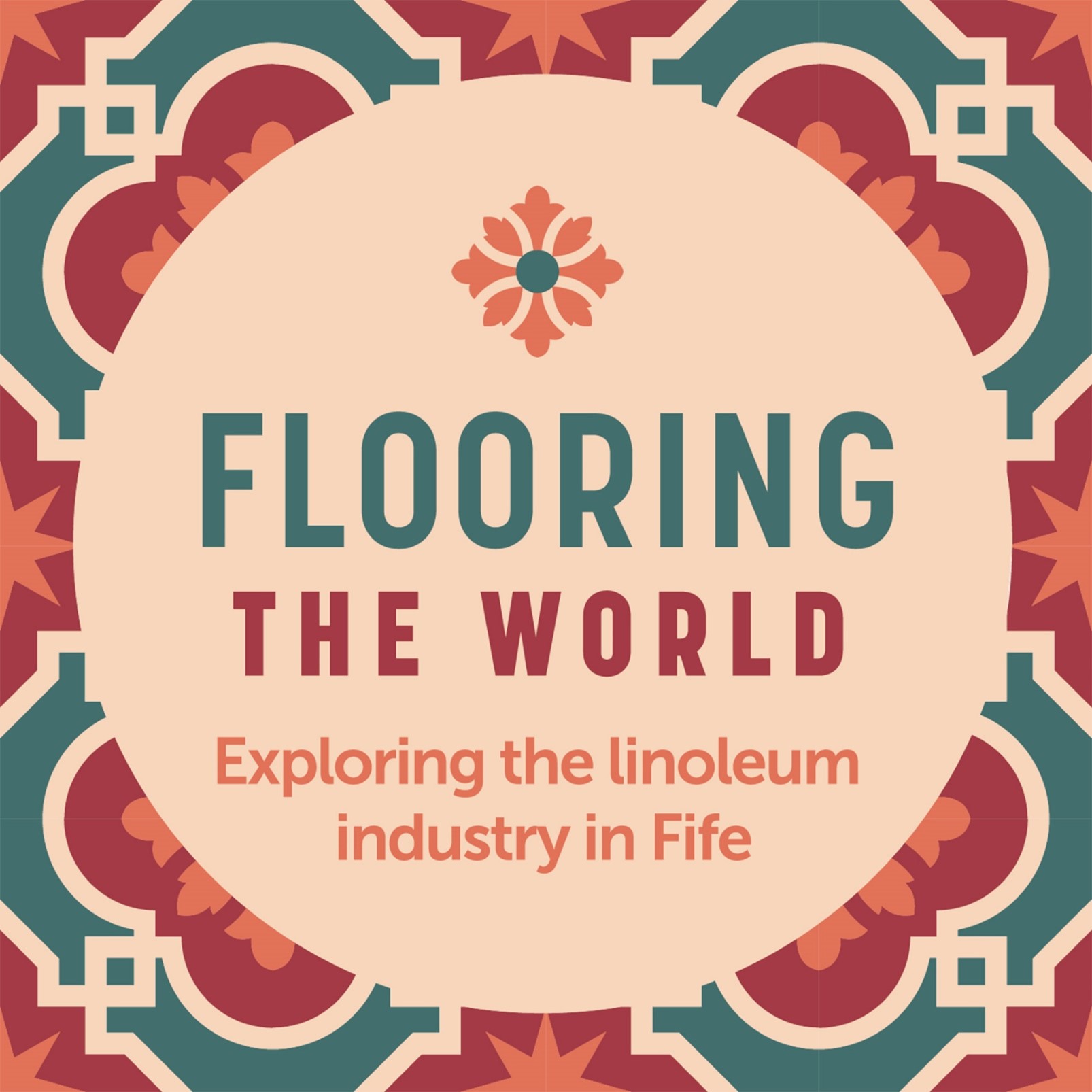
![]()


